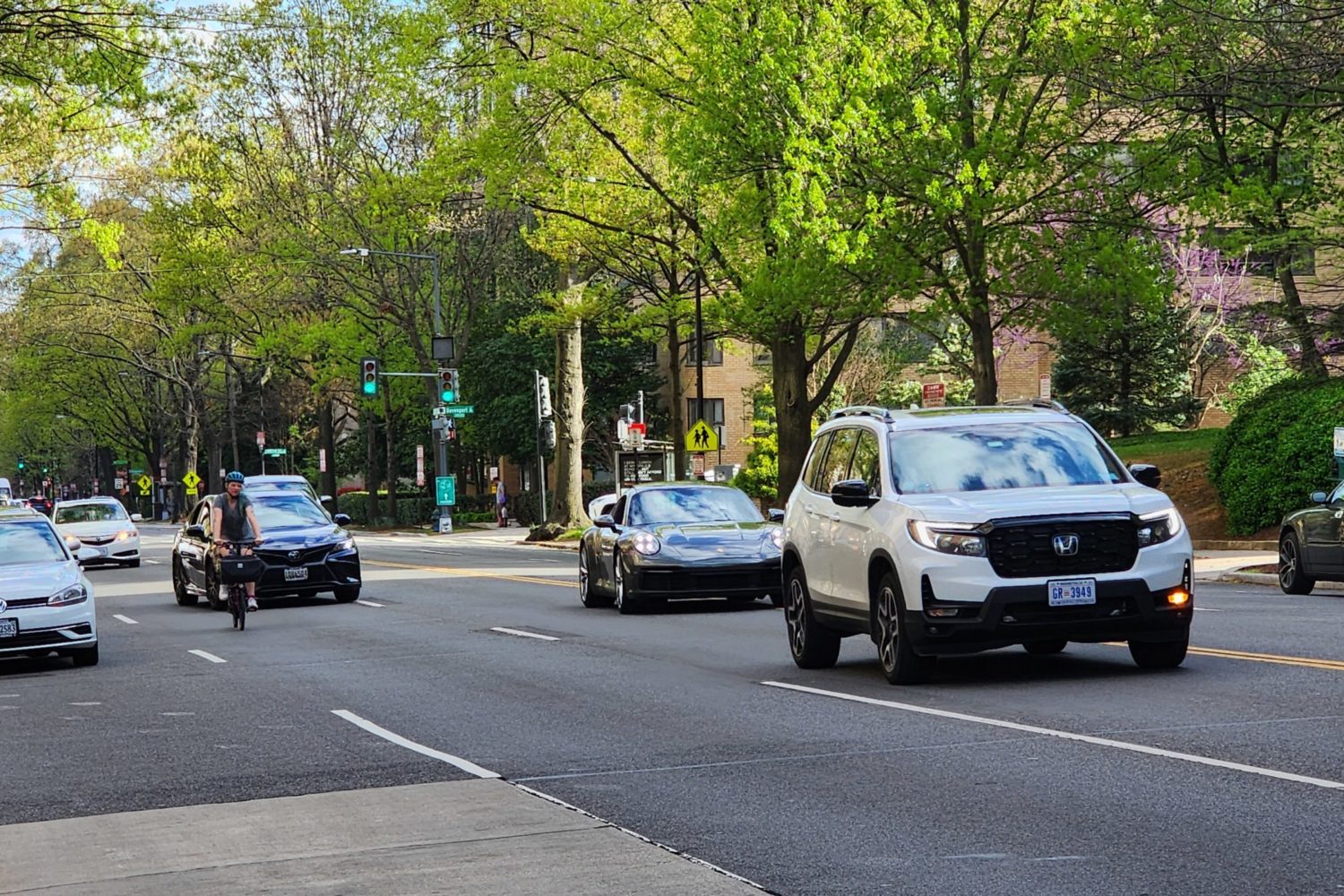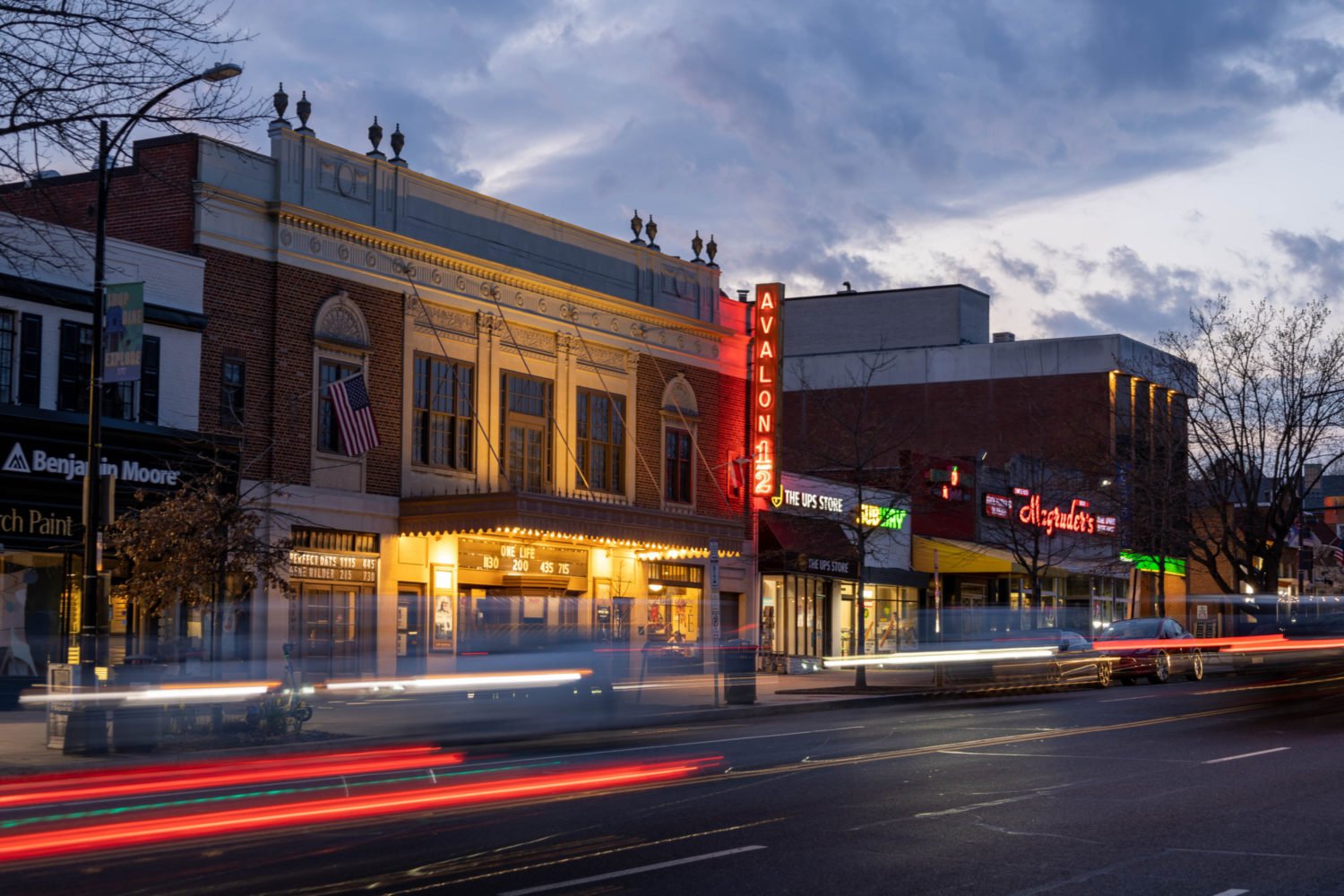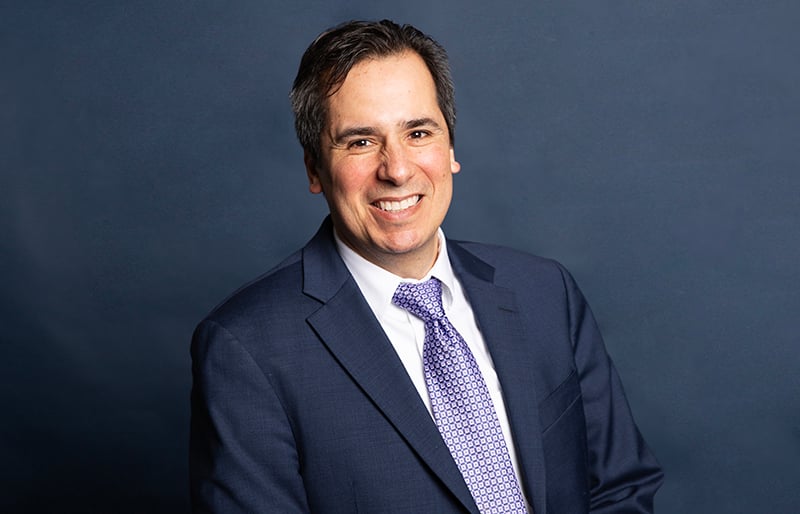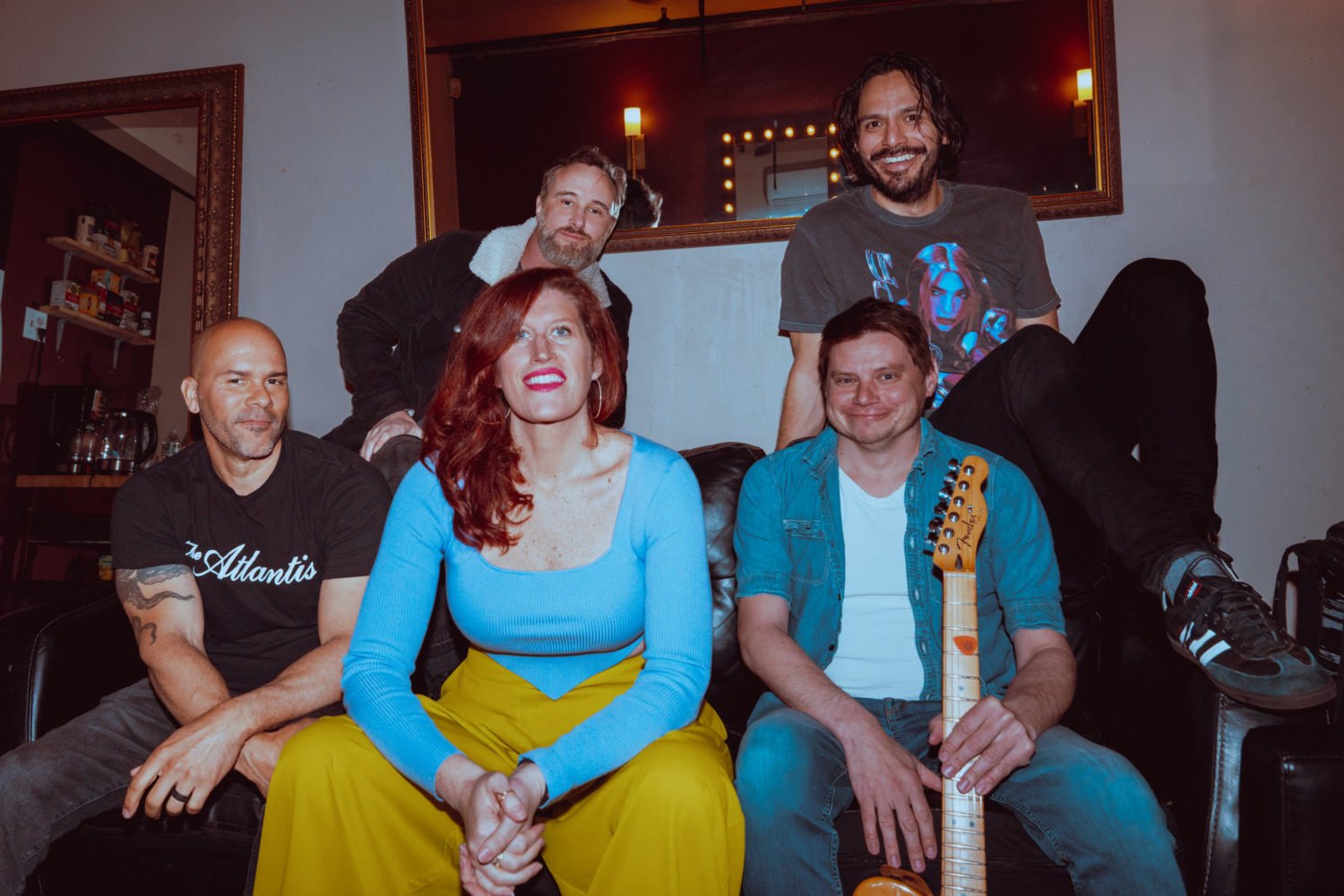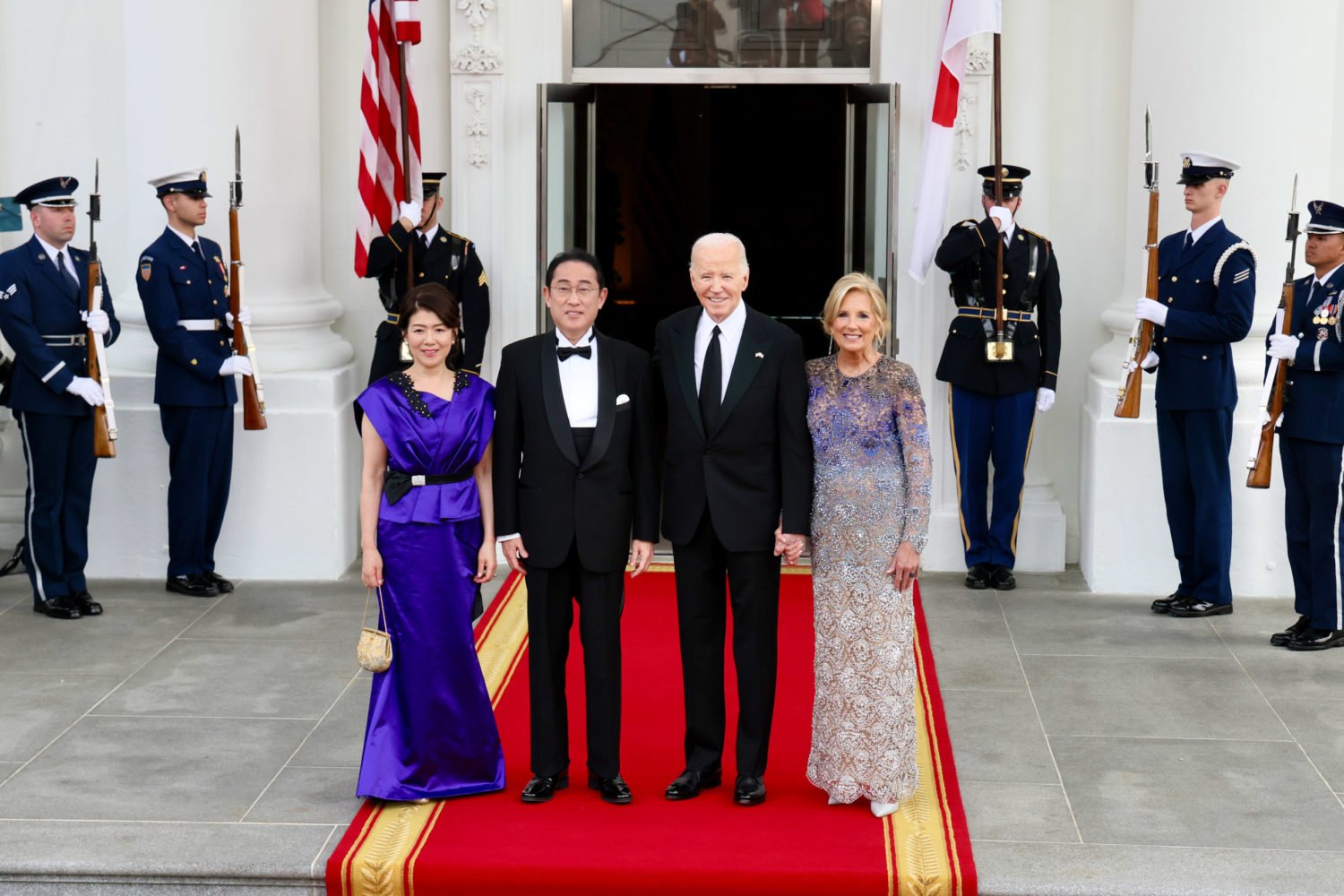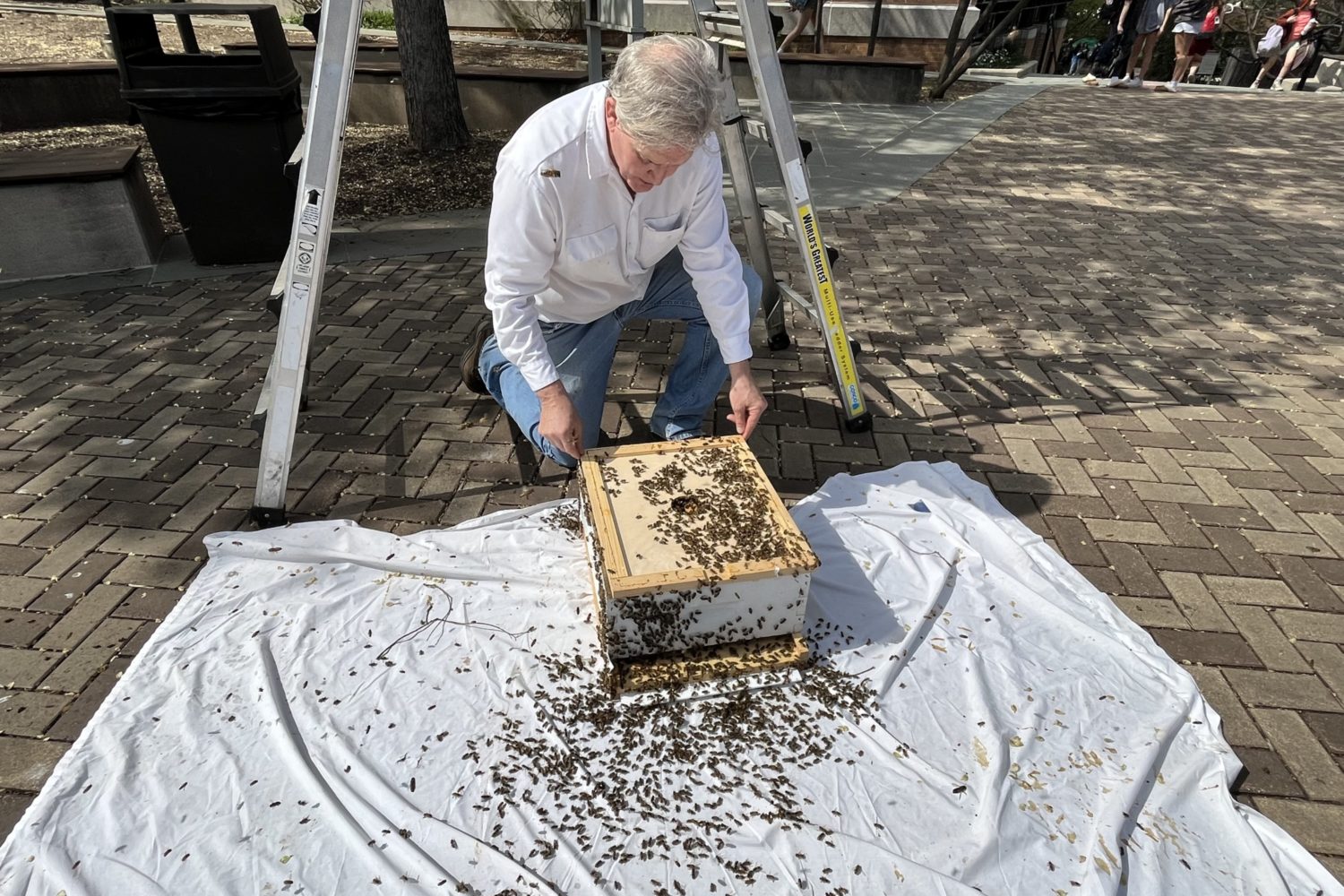It's not how much you start with but what you do with it–that could be the theme song of the Washingtonians of the Year. Most are serving the community in ways they would never have predicted. David Rubenstein, once on the fast track at MCI, plundered his retirement fund to create EnvironMentors, giving inner-city kids a boost in science. As a community worker with the Hispanic Committee of Virginia, Patricia Moreno tried to avoid her clients who were suffering with cancer–until she embraced them with a loving support network. H. Patrick Swygert, president of Howard University, could have let LeDroit Park languish in violence, drugs and ruin–but he took the initiative to change things. No one forced Illeene Leventhal of Potomac to reach out to those on DC's mean streets. She did it–and ten years later still does–out of love. And sidelined by a near-fatal swimming accident, former high-school football star Tim Strachan proves daily that not all sports heroes are on the field of play. After honoring almost 500 Washingtonians of the Year since 1971, The Washingtonian still has no trouble finding inspiring examples of people helping people–and making our community a better place to live.
ALMA POWELL
"MY HEART SINGS EVERY TIME I WALK THROUGH THE DOOR AT THE KENNEDY CENTER.''
A few years back, Alma Powell came to a crossroads in life. Her children were grown. When her husband, Colin, retired from the military and public life, she retired from the "wife of" responsibilities that went with his commands.
What should she do with the rest of her life? "The answer came very easily," Powell says. She would do what had always come naturally–she would be a volunteer.
As a military wife, Powell had worked for the Red Cross, volunteered at base hospitals, and used her training as an audiologist. "Military wives provided the quality of life and created the community services for soldiers," Powell explains.
Once the Powells moved to Washington, Alma was besieged by charities asking her to lend her name to their activities.
"I don't want to lend my name unless I'm lending myself," Powell decided. She has chosen to put her time, her heart, and her soul into two community causes: the John F. Kennedy Center for the Performing Arts and Best Friends, a teen-pregnancy prevention program. President George Bush appointed her to the Kennedy Center board in 1993; she now serves as vice chair. On the center's community board, she made it her mission to connect military families to the performing-arts center.
Now she is deeply involved in all aspects of the Kennedy Center–especially the educational and outreach programs for children. Powell is proud that the Kennedy Center now provides transportation to bring DC schoolchildren to performances.
"We're trying to put the Kennedy Center into the life of the community," she says.
Alma Powell is also a chair with the Best Friends Foundation. When her friend Elayne Bennett started Best Friends, Powell admits she was skeptical. The program requires sexual abstinence–a difficult choice considering the social pressure girls can face.
"But after two or three years, I saw the difference it was making," Powell says. "The girls grew in dignity and self-respect."
So far, 100 percent of the high school girls in the program have graduated. Best Friends has a less than 1-percent pregnancy rate, compared with a high-school age pregnancy rate of 18 percent in the District.
Alma Powell is as passionate about volunteering as she is about her personal causes. The Powells support scholarship programs for inner-city kids, and Alma recruits family members to take part in events such as Make a Difference Day.
"Giving of yourself, you have a wonderful feeling of personal reward. You get as much out of it as you give. I love it."
DAVID C.RUBENSTEIN
"WE GET KIDS TO CREATE BETTER FUTURES FOR THEMSELVES."
Callie Williams is looking into lead-paint poisoning. Tarik Mohamed tracks species survival in Rock Creek Park. Michelle Wood explores acid rain's effects on plant growth.
These DC high-schoolers aren't doing homework. Having designed yearlong science projects on their own time, they're analyzing complex results–thanks to an innovative program called EnvironMentors.
It's a life-changing experience: working with environmental pros, doing research, stretching their limits. And making it possible has changed David Rubenstein's life, too.
In 1990, Rubenstein was an MCI account manager who longed to do "something socially valuable." Already a Big Brother to a DC teen, he was casting about for a longer-term project. A cross between Big Brothers and a science fair began taking shape in his mind.
But such a project would need smart leadership and plenty of time and money. Rubenstein quit MCI, gathered board members with expertise, and sunk "a significant chunk" of his retirement fund into the new nonprofit. He took no salary for two years.
In 1992, EnvironMentors connected 14 students with devoted volunteers. The following spring came a first science fair in a Smithsonian basement. Now every school year ends with the students demonstrating their findings.
Rubenstein made other connections, too: IBM, AT&T, NASA, the Cafritz Foundation, the Heinz Family Foundation, and the EPA are just a few of his backers. He's grown the program both here–200 students and adults in all quadrants of DC–and in four other cities.
He also saw ways the mentor model could be improved, with corporate basics like measurements and accountability. His eventual goal: publish a detailed manual that other communities can use to start their own EnvironMentors, then act as a consultant to get them going. He'd also like to see the science fair go national.
"I want to show students important components of success–discipline, hard work, persistence," he says. Qualities that David Rubenstein has in spades.
VOLA LAWSON
"PUBLIC SERVICE IS A NOBLE CALLING."
Dinner out was the plan for Vola Lawson and friends that Saturday night in late 1970. Along Shirley Highway, they passed a broken-down bus and dozens of migrant workers bound for orchards up north. Because fixing the bus would have cost too much, the orchard owners had abandoned the migrants at the side of the road.
Lawson took charge. One friend drove to McDonald's for food, another to the Red Cross for cots. The Black Elks supplied a place to sleep. Hospitals aided sickly passengers. Within days, thousands of dollars were raised to repair the bus and fund the rest of the trip.
Vola Lawson brought that same compassion and determination to serving her adopted hometown of Alexandria. She will retire in March after three highly successful decades of government service, half of that as city manager. Her legacy includes a rare AAA bond rating from both of Wall Street's major credit-rating agencies, saving taxpayers millions of dollars.
America's third female manager of a city larger than 100,000, Lawson has also opened doors for women and minorities. The city's Office on Women–established in 1974 after Lawson went door to door for signatures–produced a nationally groundbreaking report on discrimination. From that have come rape and domestic-violence counseling, educational and legal reforms, and great strides for women in government.
For Vola Lawson, the personal is political. She and her husband, both civil-rights activists, founded the Parkfairfax Citizens Association; her policies have strengthened neighborhoods citywide. She had a double mastectomy in 1994; her Committee on Breast Cancer Awareness makes sure no Alexandria woman is denied a mammogram and follow-up care.
Inspired by the Kennedys, Lawson has devoted her life to urban renewal, community policing, drug treatment, childcare, and more. She's even led the city's DASH bus service since its start. No wonder constituents describe her with words like devotion, commitment, character, and strength.
H. PATRICK SWYGERT
"THE NEIGHBORHOOD IS CHANGING BY THE HOUR."
For years, historic LeDroit Park had as many boarded-up buildings as occupied homes. Headlines called it a neighborhood under siege. Residents were angry at Howard University for buying up more than 50 houses and lots for a future expansion–then letting them languish in ruin.
That was before 1995, when Patrick Swygert became university president. Before the new HU Community Association, created to improve town-gown relations. Before Howard won a HUD grant for community economic development. And before dollars and determination made LeDroit Park proud again.
After so many years of neglect, how did one man change the status quo? "I brought a realization of the limitations of the university," Swygert says. "We needed a partner, so I got one."
That partner–mortgage funder Fannie Mae and its foundation–has put more than $24 million behind Howard's Phase I drive to renovate its own properties, develop others, and fill them with homeowners. Neighbors, campus employees, and public servants can buy at below-market rates. Phases II and III will bring landscaping, safety, and street upgrades, business growth along Georgia Avenue, and complete telecommunications wiring for the neighborhood.
The double Howard alumnus also hopes to develop 25 open acres near McMillan Reservoir, create a "town center," and add a museum or two.
Residents were skeptical when Swygert began talking up his ideas. But he hired a full-time community liaison, poured $7 million into campus-area improvements, and asked the neighbors for input. The result has been called DC's most significant redevelopment plan in a quarter century.
Now Swygert's pushing city government to keep up with everything from lighting to parking to sidewalk repair. He doesn't want the people who stuck with LeDroit Park through the bad times to become victims of its success.
And successful it is. "Folk are calling us–not campus people or city employees, just folk–and saying, 'We want one of those Howard houses. How do we get one?' " Swygert smiles: "I have to say, 'They're all gone. Every house and lot is sold.' "
ELLIOTT I. PORTNOY
"I HAD NO REAL EXPERIENCE. I JUST FELL IN LOVE WITH THE KIDS."
When parents call Elliott Portnoy to ask about his sports program for children with disabilities, he often hears resignation in their voices. If their children have severe or multiple disabilities, the parents expect they'll be rejected.
They are in for a surprise. Elliott Portnoy's KEEN (Kids Enjoy Exercise Now) program has never turned away a child. With one or two volunteers for every athlete, lots of activities to choose from, and his own enthusiasm, Portnoy finds a way to get every kid into the game.
Portnoy doesn't charge a penny. He raises the funds needed to support KEEN while working more than full-time as a lawyer with Arent Fox. The law firm has "adopted" KEEN, donating funds, volunteers, and resources.
Elliott Portnoy was a Rhodes scholar at Oxford when he volunteered to teach tennis to kids with mental disabilities. He realized tennis is a hard sport for this group–it requires a lot of motor coordination. So Portnoy expanded the program to include more sports and rounded up friends to volunteer as coaches. Portnoy called the program KEEN because he wanted a name that sounded British.
Portnoy started a KEEN program in Washington when he came here in 1991 to finish his law studies. He linked with Greater DC Cares to recruit volunteers, making it clear that no schedule commitment is required. But many get so involved with their athletes that they can't stay away.
At the end of each session, there are "prouds." Each athlete tells what he or she did that day, and the room explodes in cheers. For some children who cannot speak, their coaches speak for them.
"You should see their faces light up when the cheering begins," a KEEN mother says.
"This is the first time I've seen someone else actually enjoy spending time with my child,'' says another.
Nobody has a better time at KEEN than Elliott Portnoy, the head coach, head cheerleader and at times the water boy. "The kids teach you about perseverance, about values," he says. "I do KEEN for the most selfish of reasons–because I love it.''
BOB LEVEY
"I'VE GOTTO GET PEOPLE INTERESTED IN MAKING THE CITY BETTER WHILE THEY'RE EATING THEIR CORN FLAKES."
Newspaper columnist Bob Levey hits close to home.
For 19 years, Levey has been writing a column in the Washington Post about hometown Washington.
Levey joined the Washington Post as a reporter in 1967 and covered police, local politics, and sports before becoming a columnist.
Levey's style feels like a conversation with a good friend. Very few readers write to "Mr. Levey,'' he reports. "It's a Bob kind of column."
And write to him they do–often enclosing checks for Levey's campaigns for Children's Hospital and Send-a-Kid-to-Camp. In the fall his office fills with grocery receipts to be exchanged for computers for DC public schools.
When Levey started the first campaign for Children's in 1981, he wasn't sure readers would respond. They did–to the tune of $300,000. Over the years, Levey has raised about $9 million for Children's and $5 million for the camp program, and collected $40 million in Giant Food and Safeway receipts to trade in for computers.
Levey also is tapped by lots of doing-good groups to make speeches and appearances. Sometimes he even sings for his supper–at a benefit concert for the Mighty Special Music Makers, Levey belted out show tunes. In his younger days, he was a semi-professional folk singer.
Less well-known is the fact that Levey is chairing the campaign to create an arts endowment at Montgomery College or that he volunteers weekly for the Mended Hearts program at Washington Hospital Center.
In 1997, Levey had successful open heart surgery at WHC. "They gave me back my life," he says. Now he spends every Thursday morning visiting recent heart surgery patients to answer their questions and allay their fears.
He adds: "I tell people just out of heart surgery that to every question they have about sex, the answer is yes."
REV. ABBA TESFAMARIAM BARAKI
"PEOPLE HAVE A TREMENDOUS NEED FOR PEACE."
When the top Catholic bishops of Ethiopia and Eritrea led Mass together last fall in Washington, the meaning was lost on no one. Although their countries are at war, celebrants prayed side by side for peace–thanks to a District priest named Tesfamariam Baraki.
Ethiopia has been ripped for decades by invaders, guerrilla warfare, and famine. Once its Marxist rulers were overthrown in 1991, Eritrea split from Ethiopia, forming two free but destitute countries. Relations were friendly for seven years. Then, in 1998, a border dispute turned allies into enemies.
But not here. For many of the area's 2,000 Catholic Ethiopians and Eritreans, there is sweet sanctuary in Baraki's Kidane-Mehret Ge'ez Rite Catholic Church.
His mission is to support struggling families, steer young people from "drugs, sex, alcohol, and other social ills," maintain cultural values, and focus his diverse flock on love, not war–all while performing the ministerial roles of a parish priest.
"What's striking is that the community in Washington is sticking together," says Father Aniedi Okure of the US Catholic Conference's Pastoral Care of Migrants and Refugees office. "He is not allowing that crisis to divide them."
Since 1984, Baraki's ministry has grown from 50 to some 700 immigrants and their children in an area stretching from Laurel to Richmond. In his spare time, he coordinates pastoral care for all Catholic Ethiopians and Eritreans across America.
Few older refugees know English. Parents may work two or three jobs; children feel conflicted; farmers need new skills. Nearly everyone–including Baraki–sends money to relatives overseas. Strong family orientation means there's no volunteer tradition. The congregation lacks a permanent home. And his only assistants are an education aide and a divinity student.
Can one man wage peace in the diaspora? Baraki is trying. He mediates conflicts, has married several Ethiopian-Eritrean couples, and speaks three regional languages–plus English and Ge'ez, an Eastern Rite liturgical tongue. In any language, says Okure, "his message transcends all boundaries."
MARIO MORINO
"TECHNOLOGY IS THE TROJAN HORSE THAT GETS US IN THE DOOR."
Mario Morino was a successful high-tech entrepreneur when he decided it was time he put his knowledge where his heart was. In 1994, he founded the Morino Institute to help nonprofit groups use the Internet.
"The Internet can be a tool for social change," Morino believes. His institute has created four Network Learning Centers in DC: at the Perry School in Northwest, in the Edgewood Terrace apartment complex in Northeast, at Calvary Bilingual Multicultural Learning Center in Adams Morgan, and at Friendship House on Capitol Hill.
These are places where children come to learn to use technology and plug into information resources not available before. The head of one of the centers has become a believer: "I'm now beginning to understand how much our children are missing and how they really will be left behind unless we can do much more."
Mario Morino hopes that the Network Learning Centers will be a catalyst for change in the organizations as well as the people they serve. He sees the Internet as a way to enhance staff training. Plugging into the Net makes it easier for organization heads to reach government agencies, funders, and their directors and supporters.
Once nonprofit organizations can easily share information and ideas, Morino hopes that they begin to cooperate to boost their effectiveness.
Mario Morino is part mousepad revolutionary and part Jane Addams reformer.
"I am able to stand here today because I was given the chance, the encouragement, and the needed resources in my time," Morino says.
"We have a remarkable opportunity," he says. "There is a cauldron of change. We can either allow things to happen or we can affect the outcome."
Morino already has signaled where he stands. He keeps clicking on "go."
BARBARA PATTERSON
GWEN THOMPSON
"THE CHILDREN DON'T NEED SPECIAL SERVICES. THEY JUST NEED WHAT EVERYBODY ELSE HAS."
Barbara Patterson and Gwen Thompson got a call one day from a boy going to a local boarding school with the help of the Black Student Fund. "I need some money," he said. "I have to buy a book about a mouse and a man."
Patterson and Thompson were amazed on two counts–that the boy was about to tackle John Steinbeck and that he seemed unfazed by the assignment.
The fund's staff had lined up tutors to help him. But he never needed them. "If that kid needed help, he would track those teachers down," Patterson says. "He didn't want to fail."
Few Black Student Fund scholars fail. Although the 260 enrolled in 44 schools come from a wide range of backgrounds and abilities, the fund has a 99-percent graduation rate. And 95 percent go on to college; 84 percent earn undergraduate degrees.
This year, the fund's graduates were accepted at Hampton, Howard, Harvard, and Johns Hopkins universities, to name a few.
Patterson, the BSF president, and Thompson, the fund's director, create a safety net for every student and every family. They provide whatever it takes–food, clothes, computers, and academic coaches–to help a child make the grade.
When the Negro Student Fund was started in 1964, independent schools were virtually all-white. Some of the barriers faced by minority students are still present–in the name of "tradition."
Patterson and Thompson are working to change the environments in independent schools by recruiting more African-American teachers and teaching administrators.
And they are not shy about speaking up. Their good-cop (Thompson), bad-cop (Patterson) routine has helped many a school administrator to focus on "minor details" like applications that ask about parents' education, or college counselors who treat minority students differently, or free meal programs that single out kids in need.
Patterson and Thompson are just as tough on the kids. Thompson points at signs on the meeting-room walls: DON'T FEEL THREATENED, DON'T BE AFRAID, and PLEASE DON'T WHINE.
"We don't promise them anything but hard work," say Patterson and Thompson. "They know our expectations are high." And for the past 36 years, Black Student Fund kids have met those expectations and then some.
CHARLENE DREW JARVIS
"MY GOAL FOR THE PAST 20 YEARS HAS BEEN THE RESTORATION AND ECONOMIC RECOVERY OF THIS CITY. IT'S HAPPENING."
Charlene Drew Jarvis intended to follow in the scientific footsteps of her father, Charles Drew, the blood-bank pioneer whose work saved countless lives. Instead she decided to leave the laboratory for politics, to help save the city she loved.
Drew Jarvis had been doing research in neuropsychology at the National Institute of Mental Health. "I kept asking, where did my responsibility lie?" she remembers. "I decided not to wait until the end of my scientific career to start public service.''
When Drew Jarvis was elected to the DC city council in 1979, the District was still an economic backwater. She became head of the council's committee on economic development, determined to increase the city's revenue base.
She paved the way for the MCI Center and the new Washington Convention Center. She introduced legislation to create Business Improvement Districts. The results: more jobs and more tax revenue.
She wasn't satisfied. As chair pro tempore of the council as well as chair of economic development, "I could identify needs that couldn't be met in my legislative role," she explains. She could help grow the jobs, but she couldn't directly help people prepare to fill those jobs.
Four years ago, Drew Jarvis became president of Southeastern University and started to focus on education for the coming economy. At Southeastern, 45 percent of students are studying information technology. A partnership with DC Link and Learn is also providing technology training at minimal charge to kids as young as six–training designed to continue through the university's degree program.
Government, business, and higher education are "the dynamic trio" that must work together to build a strong local economy, she believes.
Both the classroom and the council chamber are a long way from the laboratory. Drew Jarvis believes she made the right move.
"As a scientist, you are imbued by the public with higher motives," she says. "In politics, you have to work harder to prove your credibility. But there are on-the-ground successes I couldn't have had in the laboratory."
Politics has also given Charlene Drew Jarvis a close vantage point from which to see her city change. "Washington is a less segregated city," she notes. "I see a dramatic willingness on the part of blacks and whites to drop their historical belief systems. I did not expect to see that in my lifetime."
G. PATRICIA MORENO
"AT LEAST THEY DIE KNOWING SOMEONE HAS PAID ATTENTION."
Patricia Moreno was frustrated. The community worker with the Hispanic Committee of Virginia was juggling 70 clients. Twenty were battling cancer–most without health insurance, immigration clearance, or a good grasp of English.
"I'm tired," she told her boss. "I don't want to work with cancer anymore." In 1996, she transferred from the Fairfax office to Arlington, which had never had an oncology client.
Not, that is, until Moreno got there. Among her first cases was Felipe, a 17-year-old Salvadoran dying of lung cancer. In pain and failing as the main provider for his family back home, Felipe nonetheless maintained a zest for life until the end.
"He moved my heart," she says.
Outside of her full-time job, Moreno, a single mother, now spends 20 hours a week coordinating care, arranging resources, and encouraging optimism through a Spanish-language support group she calls Todos Juntos, meaning "all together."
"Before food, money, anything, I want them to feel the heart of others," she says. "People are so much more than just an illness."
At first, the group ran on heart alone. Moreno drove clients to appointments, visited hospitals, and badgered agencies for aid. Slowly, she started breaking down Hispanic reluctance to join support groups–and got its members to reach out to one another.
Todos Juntos has grown to 50 or 60, including some relatives. The first program of its kind in Northern Virginia, it's funded through the end of 2000 by the Arlington Health Foundation.
An American citizen since 1996, Moreno emigrated from Colombia expecting to stay only a year. Now her dreams include Todos Juntos-sponsored English and computer classes, counseling, and her own full-time presence.
Until then, she's raising her teenage sons and working toward a bachelor's degree. Says Patricia Moreno, "I think I have the skills to be a very good social worker."
GILBERT & JAYLEE MEAD
"WE DON'T PLAY GOLF. WE DON'T PLAY BRIDGE. WE JUST LOVE BEING INVOLVED IN THE THEATER."
Jaylee and Gilbert Mead have always been starstruck.
They met at NASA's Goddard Space Flight Center in Greenbelt–she was an astronomer, he was a geophysicist.
The Meads also shared a passion for musical theater. Goddard had an active amateur theater group, and the Meads became its mainstay. Gilbert was often the musical director; Jaylee shone under the lights in The Pajama Game, South Pacific, and Fiddler on the Roof.
During their early days in Greenbelt, downtown DC theaters seemed as distant as Beltsville is from Broadway. But before the Meads retired from NASA–Gilbert in 1987, Jaylee in 1992–they had begun to realize, "Hey, there's a big world out there."
The Meads were soon starstruck a second time–this time with professional theater in Washington. Jaylee joined the board of Studio Theatre, and Gilbert signed on at Arena Stage.
When Gilbert's father died in 1988, the couple used his inheritance to create the Gilbert and Jaylee Mead Family Foundation. They began to support local theaters at a new level.
One of the auditoriums at Studio Theatre is named for them. They have also contributed generously to Arena Stage, Signature Theatre, the Kennedy Center, and performing-arts groups.
They always contribute much more than money. Gilbert and Jaylee Mead are the best audience at any production. They'll go to a show two or three times and enjoy it each time. Asked how he feels about being a theater insider, Gilbert's response was, "Wow!"
That "wow" is echoed all over town when theater people talk about Gilbert and Jaylee Mead. A longtime supporter of the arts explained it: "There are people who give money and people who give of themselves. It is rare to find people who do both."
ILLEENE LEVENTHAL
"I DON'T WANT TO HELP ONCE AND DISAPPEAR."
Illeene Leventhal's epiphany came ten years ago in December in the form of TV news about the plight of the area's homeless. "I'd love to cook for these people," she told her husband, "but I'm a little afraid to go alone."
"You cook," Norman Leventhal said. "I'll drive."
The Potomac couple and two of their three children set out on New Year's Day. At their first stop, under the Whitehurst Freeway, Illeene approached a man on a grate: "Would you like a hot meal?"
The man looked up in wonder. "I didn't think anyone cared," he said.
"That touched something deep inside my soul," Illeene says now. "I had to do something more."
"Something" developed into a nonprofit group called Hand to Hand, with a volunteer roster of 400 and nearly a dozen programs to help people in crisis.
Its donated van, filled with food, toiletries, clothes, and social-services information, is only the most visible symbol of Hand to Hand's outreach. Other programs channel used furniture and household items to low-income families, teach home-management skills, provide kids with immunizations and school supplies, and connect better-off families or groups with those who could use festive meals and gifts at holiday time.
At first glance, the perfectly coifed woman in pressed blue jeans may seem an odd leader for a help-the-needy movement. But she insists that looks can be deceiving.
For instance, most of those served by Hand to Hand are employed, at least part-time. Some are training for technical jobs. Some live on the street to avoid noisy, dangerous shelters. And thousands of families who have a home are one illness or layoff away from losing it.
Leventhal is proudest of Project Safety Net, which makes loans to low-income working families threatened with eviction. Recipients either repay the loan or–using donated Giant Food certificates–shop for and cook meals that go out in the next van run.
Project Safety Net has kept more than 650 families intact and safe. "I'm so lucky to have the opportunity to help others," Illeene Leventhal says. And Washington is lucky to have her.
TIM STRACHAN
"SPORTS GAVE ME THE DETERMINATION, THE DRIVE, AND THE DESIRE TO WIN. NOW I'VE APPLIED THAT TO LIFE."
Tim Strachan was within sight of his personal goal posts in the summer of 1993.
Going into his senior year at DeMatha High School, the football star was one of the top two quarterbacks in the nation being scouted by football powerhouses. The other was Peyton Manning. Penn State coach Joe Paterno and Maryland's Mark Duffner had already offered Strachan full scholarships.
The son of Rich Strachan–Roger Staubach's backup at the Naval Academy–and the youngest of four athletic brothers, Tim started tossing the pigskin at the age of five. "Football was the one thing I knew I could do well," he says.
The Strachans went to Bethany Beach in 1993 for a vacation before fall football practice began. One afternoon, Tim dove into the ocean as he had done a thousand times before. But this time he hit bottom and broke his neck.
Lying in the water, he remembers, "somebody's arms were hitting me in the face and I realized they were mine."
Weeks later, Tim Strachan was at Thomas Jefferson University Hospital in Philadelphia. His head had been immobilized in a steel halo. He had struggled just to survive–battling pneumonia and pancreatitis. But at first he didn't realize the severity of the injury.
Slowly, Strachan was beginning to see that he might not make it back to play for DeMatha. He asked to see his father, who told him the truth.
"I put my game face on," Tim says. Then he began training for the game of life.
At first he could move only one arm; now he has regained more upper-body movement, drives his van, and tries to walk every day in a therapeutic device built by his dad.
Both Penn State and Maryland kept their promises for full scholarships for Strachan. He chose College Park and has spent the past four years as a student coach, working with quarterbacks and other offensive players, analyzing game films, and helping to teach fundamentals.
Tim Strachan often speaks to groups of kids and adults about what he's learned. The most important message he conveys is the power of a fighting spirit to overcome obstacles. He just graduated from Maryland with a 3.6 grade-point average. Zooming around campus in his electric wheelchair, he often faced physical barriers.
"If I can't take a certain sidewalk, I'll just go another way," he says.
REV. THOMAS KNOLL
"WE'RE TRYING TO GIVE PEOPLE THE TOOLS TO IMPROVE THEIR LIVES."
In the beginning, there was Community Family Life Services. With a $50,000 budget and 1H staff, it served 60 needy people around DC's Judiciary Square. And it was good.
Then, in 1982, a young divinity graduate arrived at DC's First Trinity Lutheran Church and became CFLS's executive director. Said the Reverend Tom Knoll, "Lend me $50,000, and we can house many without a home." The church council agreed. And that was better.
Knoll saw that the District was paying the Capital City Motel $3,000 a month for each homeless family sheltered there. He created a transitional-housing plan in which clients pay one third of their incomes for apartments with kitchens. Thirty percent of residents become homeowners within two years. Meanwhile, housing each family costs CFLS $850 a month.
Then Knoll saw that job training was needed. His work resulted in a cafe called 3rd & Eats, where more than 150 people have learned service, cooking, math, and management skills while earning their way to self-sufficiency.
Last year, CFLS's six job counselors helped 250 clients find employment. The nonprofit guarantees job placement for all graduates of its food-service, retail, and computer-repair programs.
And he saw that clients' children needed guidance. His work led to an after-school tutoring program, which now goes year-round and includes a work/study component. CFLS also got lawyers pro bono to push DC schools to improve services for homeless kids.
Now CFLS has a $3.2-million budget and a staff of 50. It's helping 11,000 clients revitalize neighborhoods, beat addictions, keep jobs, stay in school, and rebuild lives. Knoll's organization "has changed my life around and made me a stronger person," wrote one trainee. "I hope I can teach others what I have been taught."
In his 18th year in Washington, Knoll doesn't rest. He's building a community center with lots of computers, a basketball court, a counseling center, food and clothing distribution areas, and a laundry. Though he's raised only half the $3 million needed, construction crews are hammering away.
"I'm building on faith," says Knoll. So far, it's working. n











